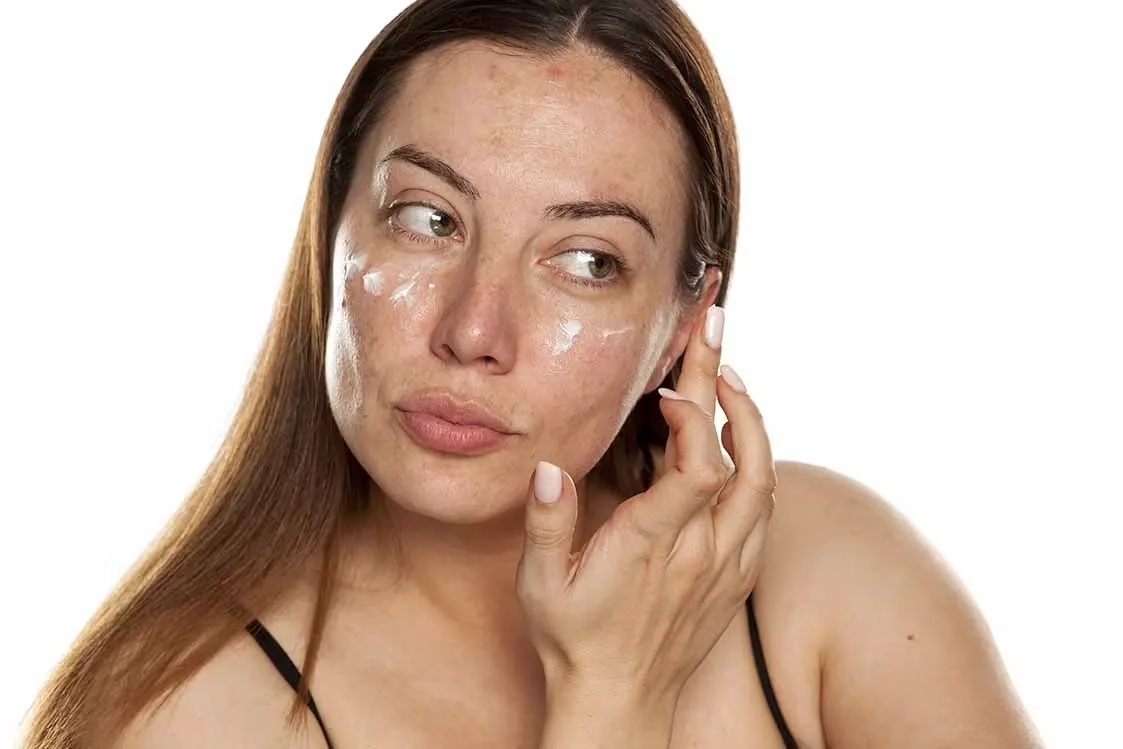Melasma is a skin issue identified by the emergence of tan or ashen blotches across the face. It arises when the skin’s pigment-producing cells, known as melanocytes, boost their output of melanin, the skin’s colouring agent. This surplus pigment settles within the skin layers, leading to an uneven skin tone.
While typically not associated with other physical symptoms, the visual nature of these marks can have a negative impact on a person’s confidence and overall well-being.
What triggers melasma?
The reasons behind overactive melanocytes aren’t singular, often involving a mix of genetic predisposition, hormonal shifts, and exposure to the sun.
Individuals with darker skin tones or those who tan easily seem more susceptible to this condition. Approximately 60% of those affected report having at least one family member with similar facial marks, highlighting a genetic link.
Around 90% of melasma sufferers are female, suggesting a role for female hormones. Melasma is also known as “the pregnancy mask” due to its occurrence in expectant mothers, especially in later stages. The condition has also been linked to the use of hormone-based birth control.
Consistent exposure to sun and light without protection is a significant factor in melasma development. It’s long understood that UV rays disrupt normal skin cell processes, increasing melanocyte numbers, melanin creation, and its transfer. Furthermore, it hinders lipid production, causes oxidative stress, and promotes blood vessel growth. More recently, it’s recognised that visible light, not just UV, also contributes to melasma and increased pigmentation. This implies that screens from computers, TVs, and phones might also play a part.
How can melasma be managed?
The appearance of melasma can be improved by using substances that reduce melanocyte activity and protect against contributing factors. Skin specialists typically advise strict sun protection and often suggest combining active treatments for faster and more noticeable improvements compared to using a single treatment.
Hydroquinone is often the first topical medication recommended by doctors for melasma. It can be found in formulas that also contain tretinoin and corticosteroids. Other topical options include azelaic acid, kojic acid, licorice extract, ascorbic acid, and glutathione.
Tranexamic acid is the primary oral medication prescribed to help fade melasma patches, and studies on glutathione and Polypodium leucotomos are also showing encouraging results. Tranexamic acid can also be applied topically in creams.
To prevent further darkening and enhance the effectiveness of any treatments, consistently using sunscreen and adopting sun-safe habits is essential. Sunscreens for melasma should be tinted and include iron oxide pigments. These pigments offer some UV blockage and also help block visible light, which, as mentioned, is involved in melasma formation.
Your dermatologist might also suggest procedures like chemical peels or laser treatments. These methods work differently to remove the melanin on the skin’s surface. However, caution is advised as these can sometimes worsen the issue, leading to post-inflammatory hyperpigmentation if not performed correctly. Ensure these procedures are done at a reputable dermatology practice.
It’s important to have realistic expectations about treatment outcomes. Noticeable improvement can take months or even years, particularly if the melanin is located in the deeper skin layers. It’s also crucial to understand that melasma is often a long-term condition. This means it can recur unless it’s consistently managed in some way. Understanding melasma is the initial step in effectively managing it over time.
Purpose of this information
The details shared on this site and within this piece are for general informational and illustrative purposes only. They do not constitute specific health advice for individuals and should not be used as such. Please consult our clinic or your dermatologist for tailored advice.
References:
- https://www.aad.org/public/diseases/a-z/melasma-treatment https://dermnetnz.org/topics/melasma/ Ogbechie-Godec, O. A., & Elbuluk, N. (2017). Melasma: an Up-to-Date Comprehensive Review. Dermatology and therapy, 7(3), 305–318.
- https://doi.org/10.1007/s13555-017-0194-1 Sarkar, R., Arora, P., Garg, V. K., Sonthalia, S., & Gokhale, N. (2014). Melasma update. Indian dermatology online journal, 5(4), 426–435.
- https://doi.org/10.4103/2229-5178.142484











